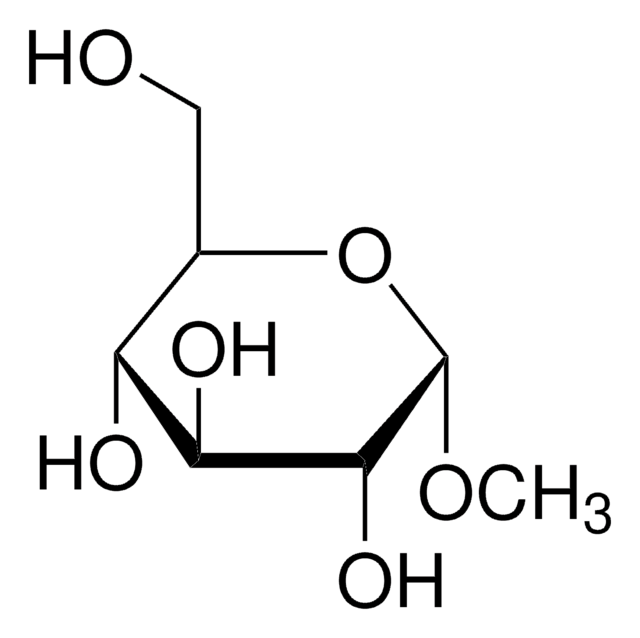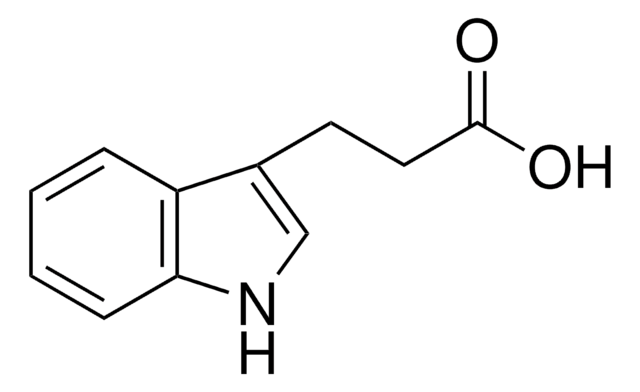66940
Methyl α-D-glucopyranoside
≥99.0%, suitable for microbiology
Sinonimo/i:
alpha-Methyl D-glucose ether, Methyl glucose, Methyl alpha-D-glucoside, Methyl glucopyranoside, Methyl alpha-D-glucose, Methyl pyranoside, Methyl α-D-glucoside
About This Item
Prodotti consigliati
Livello qualitativo
Saggio
≥99.0% (sum of enantiomers, HPLC)
≥99.0%
Forma fisica
crystalline powder
Attività ottica
[α]20/D +157±3°, c = 10% in H2O
Confezionamento
pkg of 100 g
Condizioni di stoccaggio
(Keep container tightly closed in a dry and well-ventilated place.)
Colore
colorless
Punto di fusione
165-169 °C
applicazioni
microbiology
Stringa SMILE
CO[C@H]1O[C@H](CO)[C@@H](O)[C@H](O)[C@H]1O
InChI
1S/C7H14O6/c1-12-7-6(11)5(10)4(9)3(2-8)13-7/h3-11H,2H2,1H3/t3-,4-,5+,6-,7+/m1/s1
HOVAGTYPODGVJG-ZFYZTMLRSA-N
Cerchi prodotti simili? Visita Guida al confronto tra prodotti
Descrizione generale
Applicazioni
Codice della classe di stoccaggio
11 - Combustible Solids
Classe di pericolosità dell'acqua (WGK)
WGK 1
Punto d’infiammabilità (°F)
Not applicable
Punto d’infiammabilità (°C)
Not applicable
Dispositivi di protezione individuale
Eyeshields, Gloves, type N95 (US)
Scegli una delle versioni più recenti:
Possiedi già questo prodotto?
I documenti relativi ai prodotti acquistati recentemente sono disponibili nell’Archivio dei documenti.
I clienti hanno visto anche
Il team dei nostri ricercatori vanta grande esperienza in tutte le aree della ricerca quali Life Science, scienza dei materiali, sintesi chimica, cromatografia, discipline analitiche, ecc..
Contatta l'Assistenza Tecnica.








